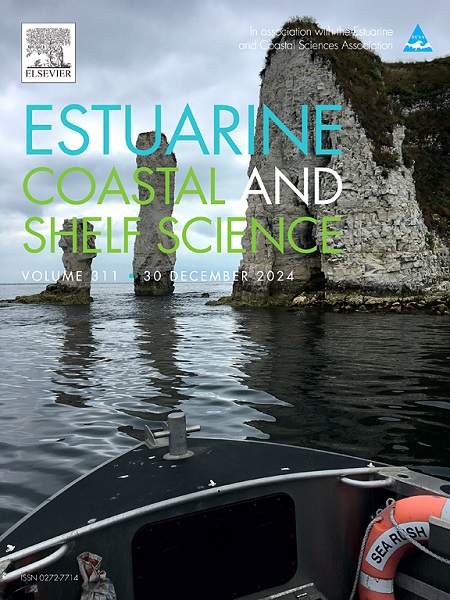东海棘尾鱼摄食行为中组织特异性能量分配对其发育的调节
IF 2.6
3区 地球科学
Q1 MARINE & FRESHWATER BIOLOGY
引用次数: 0
摘要
edulis (Uroteuthis edulis)是东海的优势头足类之一,具有重要的经济价值。竹属植物具有生命周期短、生长迅速的特点,其能量分配策略揭示了其生长和繁殖的适应性机制。本研究分析了不同组织中脂肪酸组成和稳定同位素的差异,揭示了它们在生长和繁殖中的能量分配模式。不同组织间脂肪酸组成、δ13C和δ15N值的差异(肌肉与卵巢;(P <;0.05)。差异显著的脂肪酸包括二十二碳六烯酸(C22:6n3, DHA)、棕榈酸(C16:0)、花生四烯酸(C20:4n6, ARA)、二十碳五烯酸(C20:5n3, EPA)、硬脂酸(C18:0)和肉豆酸(C14:0)。卵巢PUFA含量高于肌肉和输卵管。不同组织(肌肉vs卵巢)的δ13C和δ15N值;肌肉和输卵管的稳定同位素比值显著高于卵巢和输卵管。C22:6n3与生殖投资指数(RI)呈显著正相关(P <;0.05), δ15N与体况指数(CI)呈显著正相关(P <;0.05)。本研究揭示了东海梭子鱼不同组织间能量分配模式和摄食行为对其个体发育的调节作用,为研究梭子鱼生活史提供了科学依据。本文章由计算机程序翻译,如有差异,请以英文原文为准。
Developmental regulation of Uroteuthis edulis through the tissue-specific energy allocation from feeding behaviors in the East China sea
Uroteuthis edulis (U. edulis) is one of the dominant cephalopod species in the East China Sea and has significant economic value. U. edulis is characterized by a short life cycle and rapid growth and its energy allocation strategy suggests its adaptive mechanisms for growth and reproduction. In this study, the differences in fatty acid composition and stable isotopes among different tissues were analyzed to reveal their energy allocation patterns for growth and reproduction. The differences in fatty acid composition, δ13C and δ15N values among different tissues (muscle vs ovary; muscle vs oviduct) were significant (P < 0.05). The significantly different fatty acids included docosahexaenoic acid (C22:6n3, DHA), palmitic acid (C16:0), arachidonic acid (C20:4n6, ARA), eicosapentaenoic acid (C20:5n3, EPA), stearic acid (C18:0), and myristate acid (C14:0). PUFA content in the ovary was higher than that in muscle and oviduct. δ13C and δ15N values among different tissues (muscle vs ovary; muscle vs oviduct) were significantly different and the ratio of stable isotopes in muscle was higher than that in ovary and oviduct. C22:6n3 was significantly positively correlated with reproductive investment index (RI) (P < 0.05) and δ15N was significantly positively correlated with body condition index (CI) (P < 0.05). The study revealed the regulatory roles of the differential energy allocation pattern among various tissues and feeding behaviors in individual development of U. edulis in the East China Sea and offered a scientific basis for studying its life-history.
求助全文
通过发布文献求助,成功后即可免费获取论文全文。
去求助
来源期刊
CiteScore
5.60
自引率
7.10%
发文量
374
审稿时长
9 months
期刊介绍:
Estuarine, Coastal and Shelf Science is an international multidisciplinary journal devoted to the analysis of saline water phenomena ranging from the outer edge of the continental shelf to the upper limits of the tidal zone. The journal provides a unique forum, unifying the multidisciplinary approaches to the study of the oceanography of estuaries, coastal zones, and continental shelf seas. It features original research papers, review papers and short communications treating such disciplines as zoology, botany, geology, sedimentology, physical oceanography.

 求助内容:
求助内容: 应助结果提醒方式:
应助结果提醒方式:


